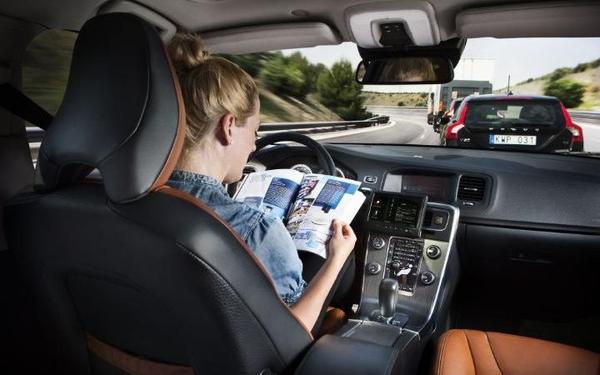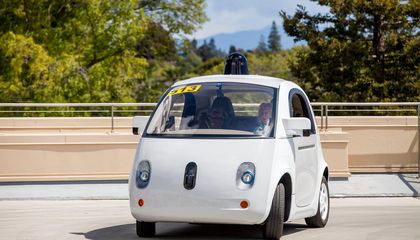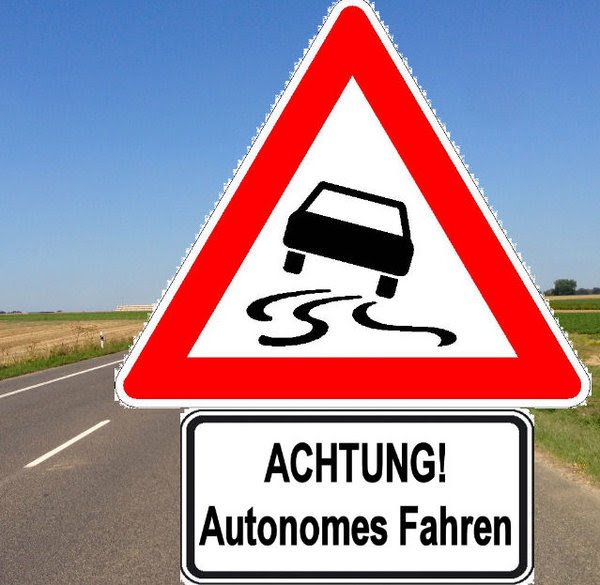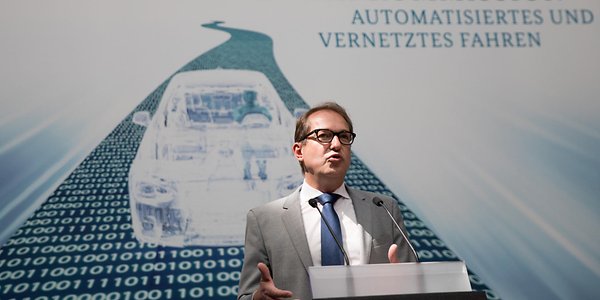Autonomous vehicles are one of the most important technologies of the fourth industrial revolution. Global companies now are investing heavily in developing autonomous vehicles. But it seems that an autonomous car is not a complete technology. As the issue of who is responsible when accidents occur becomes a big talking point, many countries are taking legislative measures to solve this issue.
What is an Autonomous Car?
 |
An autonomous car refers to a car that can navigate the roads without the need for a driver. Autonomous cars are divided into five grades, from zero to four depending on the technological level. The autonomous driving level 0 uses the autonomous safety system passively while drivers are in direct control. Autonomous driving level 1 is capable of controlling the speed, changing the direction, changing the lane, and so on, but it is necessary for the drivers to maintain a selective control over the vehicle. Autonomous driving level 2 is the state in which most of the vehicle’s operations are controlled by the on-board computer, with the driver intervening only in special cases. The driver must be ready at all times to cope with unforeseen circumstances. As with level 2, there is no obligation for the driver to operate the vehicle, so it is seen as a substantial autonomous vehicle. Autonomous driving level 3 can run autonomously in limited conditions (parking lot, private road, and so on). The driver does not need to intervene directly unless problems happen. Level 4, the final grade, autonomously operates the vehicle in all situations, and the driver only inputs the destination in the onboard navigation system.
At present, autonomous cars are not being commercialized and are under development. However, cars equipped with certain features of autonomous cars are being commercialized. From November 2018, Citroen’s C5 AirCross, Mercedes-Benz’s 4 Door Coupe ‘The New CLS’ will go on public sale and are equipped with the advanced driver assistance system (ADAS), which includes front collision aid (FCA) and the lane keeping assist system (LKAS). Additional cars equipped with an automatic parking system are also available to the public. Land Rover's Range Rover, which went on sale in November 2018, is one such example.
On October 6, 2018, according to IHS Markets, a global market research firm, 33.7 million autonomous cars will be sold globally by 2040, accounting for more than 26% of total new car sales. The global sales volume of autonomous cars will increase from 51,000 units in 2021 to 1 million units in 2025 and 33.7 million units in 2040. Full-scale adoption of this car is expected to occur after 2021.
 |
Several companies are making efforts to commercialize autonomous cars. First, Google's autonomous car Waymo is expected to go on a test runs in California on November 1, 2018. Google also has been given the right to operate about 30 autonomous cars without a driver in Silicon Valley’s Santa Clara County. The driving conditions include restricted speeds on urban roads, rural roads, day and night driving, driving in the fog and rain of less than 100 km (65 miles) per hour. Waymo has to pay at least $5 million in insurance premiums to perform these tests and must notify the community that unmanned cars will operating on the local roads.
In January 2018, General Motors (GM) unveiled the CRUISE AV (autonomous vehicle), an autonomous driving car with no steering wheel or pedal. CRUISE AV is an autonomous car equipped with a level 3 autonomous driving system based on a VOLT EV (electric car) engine. A lidar (laser radar) mounted on the roof of the CRUISE AV, a radar and a short-range and long-range camera on the outside of the car monitor a 360 degree space around the car. General Motors (GM) has already produced 200 CRUISE AVs for test drives. General Motors also said that it would the car would go on market in 2019. However, current reports state this market date may be delayed due to some problems: autonomous cars suddenly stop even though there are no obstacles, the cars do not recognize pedestrians, and so on.
Reason for not being commercialized
In many countries, such as the United States and Germany, driving an autonomous car is legal. However, accidents involving autonomous cars attract even more attention than their convenience and power.
 |
In March 2018, an Uber autonomous car, in Arizona, caused the death of a pedestrian who was carrying a bicycle late at night. The car in question was an autonomous car equipped with a level 4 system whilst on a test run. The car did not recognize the pedestrian while driving at 61 km/h. For this reason, Arizona has temporarily prohibited Uber from driving autonomous cars.
A similar case occurred in April 2018 in California, when a Tesla model S was involved in a traffic accident and the driver died. At the time, it was discovered that an accident occurred in spite of the fact that an auto pilot was installed in the car. This case raised the issue of legal responsibility for accidents along with general safety concerns regarding autonomous driving systems.
Insurance for autonomous cars is currently being discussed globally due to these autonomous driving-related events, but the legal regulations are not clear. Opinions differ on who is responsible when accidents occur during the operation of an autonomous car. The debate is ongoing, whether the owner should be responsible, whether the driver and the passenger are responsible, or whether the manufacturer is responsible for the possibility of flawed technology. An automobile industry official said, "In the case of an autonomous vehicle, it is more likely that accidental damage will be greater than that of an ordinary automobile. If a human accident occurs, the autonomous driving car’s ability to react instantly and circumstantial judgement is more unskilled than that of a car driven by a person.” For this reason, the official claimed that it was a driver’s responsibility should an accident occur for a level 2 autonomous car that allows the driver to control the car. However, after level 2 autonomous driving, it is almost impossible for the victim to prove the driver's intentions and mistakes. It is also unclear whether product liability can be applied to software producers if the product malfunctions or an accident is caused due to a defect in the software.
Global regulations for autonomous cars
Despite the controversy, some countries have proposed legislation to allow autonomous cars to operate. In the United States, in April 2018, California adopted regulations that allowed autonomous driving tests on public roads through simple procedures without requiring special licenses. In Nevada, two people must be present when an autonomous car is used. It is necessary to use to onboard monitor to account for the functioning of the vehicle and to prevent accidents by taking manual control of the vehicle should a problem occur. Autonomous cars also require a license to operate. For the first time, in May 2012, Nevada was able to obtain an exclusive license for autonomous cars. In addition to the pre-test, the state issues autonomous car licenses through rigorous tests, including technical presentations and actual driving tests.
In the case of the United States, they are preparing for the enactment of federal law on autonomous vehicle accidents, but they have yet to come to a definitive conclusion as to who should be responsible for an accident. In 2017, the state of California, USA, propelled a plan to hold manufacturers responsible for level 3 autonomous car accidents that do not require driver intervention, and revised the law in April 2018 to include responsibility of the autonomous vehicle system. According to the current law, the manufacturer is not responsible for an accident, but this can be interpreted that the driver should be held responsible for an accident caused by a manufacturing error or a coding failure. Because of this, California has decided to eliminate the law that limits accident responsibility.
 |
In Germany, the compensation limit for general car accidents is set at 6.5 billion won, but the compensation limit for autonomous car accidents is set at 13 billion won. In addition, it is mandatory to install a black box in a car, just like the black box on a plane or ship. It is optional for ordinary cars to be equipped with a black box. The owner of the car is obliged to submit the information about the accident to the authorities, when a traffic accident occurs. In order to investigate accidents fairly, victims of traffic accidents are also given the access these data. In May 2017, the law was revised so that most of the accident liability should be held by the driver regardless of the autonomous driving level. There was a critical opinion that this was a favorable legislation for the manufacturer, as it could be interpreted that the drivers should be responsible for accidents such as occurred in California. Nevertheless, the government revised the law because if the manufacturer is responsible, commercialization of autonomous cars would be delayed.
In August 2018, Japan held a committee to study the compensation and liability of driving an autonomous car to discuss a quick victim relief plan for a level 3 or below autonomous car accident. In this process, Japan reviewed the existing 'Automobile Compensation Guarantee Act' in anticipation of an increased number of accidents caused by structural defects or functional obstacles when introducing autonomous vehicles. In addition, they decided to apply driver's responsibility to the current autonomous car law. In principle, the driver must be responsible for an accident up to a level 3 autonomous car. If an accident occurs due to a structural defect or malfunction of a car, it will then be necessary to carry out an accident analysis in order for the insurers to exercise the right to indemnity of the manufacturer. Also, Japan argued that there is a need to build an environment in which information can be analyzed. The government also focused on security issues to provide compensation to victims when a third party hacks an autonomous driving car and an accident occurs. In addition to this, Japan has set specific criteria, such as a compensation plan and duty of caring for drivers if a driver is killed or injured during an accident, responsibility to update software or information, range of the structural defects and so on.
Autonomous cars in Korea
In Korea, SNUVER, an autonomous car produced by the SNU Intelligent Vehicle IT Research Center (IVIT) in November 2015, was the first to run on the road. After that, the SNUVER 2 and SNUVI were released. At the 2018 PyeongChang Winter Olympics, Korean ICT and automobile companies showed autonomous driving technology. KT, which obtained permission for driving large-sized autonomous buses, from the Ministry of Land, Infrastructure and Transport, conducted trial runs of autonomous buses on the road for the first time in Korea. In addition, Hyundai Motor provided an opportunity for a trial ride on autonomous cars. However, the legislation for autonomous cars in Korea is not yet clear.
An official from the Ministry of Land, Infrastructure and Transport said, on November 2018, that it will make stepwise regulations starting from 2019 in preparation for autonomous cars. In the case of an accident involving a level 2 autonomous car, which is about to be commercialized in 2020, it is argued that it is reasonable to provide compensation to a victim from the insurance of the car owner, as in the case of an ordinary car. The government announced that it would create a system for these responsibilities starting from 2019. Let's look specifically at the system that the government plans.
In 2019, the Road Traffic Act will be revised in accordance with the level of 'conditional autonomous driving,' in which the level 1 and level 2 autonomous cars are included. In this level, the onboard system will drive the autonomous car but people will also operate the car as occasion demands. The current Road Traffic Act regulates various mandatory acts, such as safety driving duty and prohibition of reckless driving, based on human driving. But in the new law, the situation must be tailored to the level of the system controlling a car. In addition, establishment, maintenance/inspection regulations for autonomous cars and the obligation to manage autonomous driving systems will be established. Also, the standards of criminal liability and compensation for damage, and insurance regulations, which are valid when traffic accidents involving autonomous cars occur will also be established. A revision of the Communication Network Act will also be made, which will allow for autonomous cars to collect and use video information of pedestrians without consent and before the fact. From 2021 to 2025, the law will be revised to prepare for the "advanced autonomous driving system" in which autonomous driving is possible even when the drivers cannot respond to calls for intervention from the system. After 2026, the government has announced that it will prepare for "absolute autonomous driving system" in which autonomous driving is performed in all sections and situations. When absolute autonomous cars are finally commercialized, the government will create an exclusive license to operate these autonomous cars.
 |
Countries that allow autonomous cars are increasing and each country is also creating a new law on the responsibility of the accidents. Korea is also making efforts to create domestic regulations. Governments and corporations should make efforts to produce legislation and technology to make up for the shortcomings of autonomous cars whilst keeping pace with their rapid development.
황희원 sso03134@naver.com
<저작권자 © 인하프레스, 무단 전재 및 재배포 금지>

![[보도] 제43대 총학생회 후보자 공청회 개최돼](/news/photo/202404/11686_5015_2626.png) [보도] 제43대 총학생회 후보자 공청회 개최돼
[보도] 제43대 총학생회 후보자 공청회 개최돼
![[보도] 제43대 총학생회 후보자 공청회 개최돼](/news/thumbnail/202404/11686_5015_2626_v150.jpg)
![[보도] 총학생회장 선거 열려···학생사회 대표자는?](/news/thumbnail/202403/11668_5014_266_v150.jpg)
![[보도] 무전공·계열제 논의···학생은 어디에?](/news/thumbnail/202403/11666_5011_2238_v150.jpg)
![[보도] 인하 70돌, 다양한 행사 이어져](/news/thumbnail/202403/11663_5009_165_v150.jpg)
